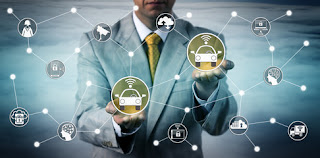Vehicle to Vehicle communication
Vehicle to Vehicle Communication
It is estimated that 1.3 million people are killed each year in car accidents. Another 22 million are injured, totalling $2 trillion in annual costs. The National Highway Traffic Safety Administration (NHTSA) wants to reduce these numbers by mandating Vehicle to Vehicle Communication for all new vehicles by 2020. These cars will be able to sense each other's positions, speed, acceleration and braking status up to 300 meters away.
Vehicle to vehicle communication
Outdoor LCDs are an affordable and practical option for controlling the various features of an electronic screen. There are two types of automobile LCDs: digital on-screen and Infrared (ILC) display screens. LCDs with digital on-screen displays are more popular in automobiles and trucks, while ILC displays are more suitable for fixed installations. ILC display is ideal for fixed structures, such as bridges and safety signage. The majority of modern cars come with basic Video LCDs that can connect to digital sub-systems, which include car-to-vehicle communication systems (VTCS) and vessels to vessel communications systems (VTVS) and vehicles for infrastructure communications systems (VIFX). The complete assortment of digital LCDs is offered in different sizes and resolutions to satisfy the various needs of customers in the automotive industry.
Communication between vehicles The advantages of the modern automobile technological infrastructure are utilized in various areas, including the passenger's safety, vehicle mobility, safety features, and the prevention of crashes. For the safety of passengers, the latest generation systems like the LATCH system and OPDS are used to avoid unintentional opening and closing doors. LATCH and OPDS can also protect people in a rollover collision by forming a barrier to stop the car from crashing into the road.
V2V Communication advantages of vehicle-to-vehicle communication systems are huge. The latest technology in infrastructure aids to monitor the performance of vehicles regardless of weather conditions. The installation of sensors can be accomplished in various methods, including using GPS receivers or the support of RFID tags. GPS receivers are generally installed on vehicles, while RFID tags are integrated into their devices. vehicle-to-infrastructure communication using infrared rays is also being explored. The use of these sensors could help reduce the likelihood of traffic jams, boost the efficiency of the fleet's fuel consumption and identify breakdowns of vehicles.
Vehicle to Vehicle Communication With an increase in demand for cars and the rise in congestion in cities worldwide, the importance of vehicle-to-infrastructure communication solutions has increased with time. These solutions are crucial for the case of failure due to a malfunction with the transmission. If the communication between a car and the network of its components fails, the vehicle cannot transmit instructions to the required devices. That results in a chain reaction that causes a breakage in the network. It can lead to delays in the installation of new vehicles and disrupt regular business operations. Companies ensure that their network system is adequately insulated and secured against any communications failures.
Communications between vehicles Sensor networks play a significant role in the auto industry. They can identify defective connections and components, which can lead to operational problems and safety concerns. Infrared sensors send an alert to the remote control centre, where the cause of the issue is identified, and a solution is then implemented. The Vehicle to Vehicle communication sensors are commonly employed in the automotive industry due to their ability to reduce operational and customer service costs.
The Vehicle-to-Traffic Control A different usage case for autonomous vehicles is to use autonomous driving. Autonomous vehicles allow the car to navigate traffic jams with the aid of a central computer system. The system, in the majority of instances, can be managed by the automobile's brain, which can decide on the safest routes as well as the fastest speeds to get to the desired destination. In this case, the autonomous vehicle is in charge of the car and the traffic conditions. To ensure the function of that self-driving vehicle, they need to protect the most critical elements like the car's computer, navigation system, and sensors from adverse weather conditions.
Communications between vehicles third and final application that autonomous systems can use are communication between the car and other drivers in this same group. In this instance, two or more vehicle systems can perform the same tasks by using specific communications links. These links are typically created through ITT, the ITT communications system. This system can efficiently check the performance of many autonomous vehicles simultaneously and relay actual-time data towards the central control centre.
You can see the future of automotive technology is a myriad of applications and systems being developed for autonomous vehicles. These systems will enable vehicles to work as a unit, thus reducing any human involvement required. Researchers have already tested independent driving software, allowing computers to control several test vehicles with no driver supervision. The results of these tests have been remarkably efficient, particularly when dealing with traffic conditions. Soon, self-driving cars will be the norm.




Comments
Post a Comment